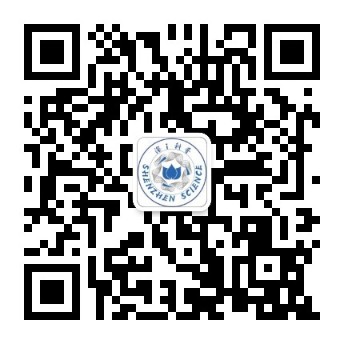音频科普:早晨微生物与你乘地铁同行
音频科普:早晨微生物与你乘地铁同行
An analysis of the Hong Kong metro found microbes, including some with antibiotic resistance genes, freshly disperse throughout the system each day. Christopher Intagliata reports.
对香港地铁的一项分析发现,每天都有新的微生物在整个地铁系统中扩散,包括一些带有抗生素耐药性基因的微生物。克里斯托弗·因塔利亚塔报道。
撰文\播音:克里斯托弗·因塔利亚塔(Christopher Intagliata)
翻译:邱燕宁
审校:张清越
Every day, five million commuters ride the Hong Kong metro. Humancommuters that is. Because there are countless more microbes riding the trains, too.
每天有500万乘客乘坐香港地铁。这只是人类通勤者,而火车上还有无数的微生物也在同乘。
"Yes it seems they are also riding the metro to move around, without paying a ticket." Gianni Panagiotou is a systems biologist at the University of Hong Kong and the Hans Knoll Institute in Germany.
“是的,它们似乎也在乘地铁四处走动,并没有买票。” 香港大学和德国汉斯·诺尔研究所的系统生物学家Gianni Panagiotou说道。
He and his team tracked the ebb and flow of microbes in the Hong Kong metro, by swabbing six volunteer commuters' palms as they commuted both day and night through the city's eight urban lines.
他和他的团队对香港地铁中微生物的数量变化进行了跟踪研究,每天白天和晚上往返于香港的8条城市线路上,并选择了6名志愿者的手掌进行涂抹采样研究。
DNA sequencing revealed a lot of harmless skin and soil microbes—but also other germs that harbored antibiotic resistance genes. And while some trains had unique microbial fingerprints in the morning—an above-ground line running near a polluted river had more aquatic and sewage-related species, for example—by the evening commute, the microbial footprint of all lines was nearly the same. In other words, microbes wind up commuting too.
DNA测序揭示了许多无害的皮肤和土壤微生物的存在,但也显示了其他含有抗生素抗性基因的细菌。另外,虽然有些火车早上有独特的微生物指纹——比如,在污染河流附近的地上线路上有更多的水生和污水相关的物种——但到了晚上的通勤时间,所有线路上的微生物足迹,几乎是一样的。换句话说,微生物在人们的通勤过程中也在扩散。
The study is in the journal Cell Reports. [Kang Kang et al., The Environmental Exposures and Inner- and Intercity Traffic Flows of the Metro System May Contribute to the Skin Microbiome and Resistome]
这项研究发表在《Cell Reports》杂志上。
The authors also hypothesize that cross contamination can occur between regions with different antibiotics use or guidelines. For example, tetracycline is common on mainland China's pig farms. And it was the line crossing into Hong Kong from mainland China that shuttled the most tetracycline resistance genes into the city each morning…where they dispersed throughout the entire system.
作者还假设交叉污染可能发生在不同抗生素使用或指导条例的地区之间。例如,四环素在中国大陆的养猪场很常见。而正是这条从中国大陆进入香港的线路,每天早上将四环素抗性基因运送到香港,从而分散到整个地铁系统中去。
Panagiotou says people shouldn't worry too much about it—it's not a serious health risk. "Having said that, it's a good idea to wash your hands after you're back at home.”
Panagiotou说,人们不应该对此太过担心——这并不是严重的健康风险。“话虽如此,但回家后洗手依然是个好主意。”
关注【深圳科普】微信公众号,在对话框:
回复【最新活动】,了解近期科普活动
回复【科普行】,了解最新深圳科普行活动
回复【研学营】,了解最新科普研学营
回复【科普课堂】,了解最新科普课堂
回复【科普书籍】,了解最新科普书籍
回复【团体定制】,了解最新团体定制活动
回复【科普基地】,了解深圳科普基地详情
回复【观鸟知识】,学习观鸟相关科普知识
回复【博物学院】,了解更多博物学院活动详情
An analysis of the Hong Kong metro found microbes, including some with antibiotic resistance genes, freshly disperse throughout the system each day. Christopher Intagliata reports.
对香港地铁的一项分析发现,每天都有新的微生物在整个地铁系统中扩散,包括一些带有抗生素耐药性基因的微生物。克里斯托弗·因塔利亚塔报道。
撰文\播音:克里斯托弗·因塔利亚塔(Christopher Intagliata)
翻译:邱燕宁
审校:张清越
Every day, five million commuters ride the Hong Kong metro. Humancommuters that is. Because there are countless more microbes riding the trains, too.
每天有500万乘客乘坐香港地铁。这只是人类通勤者,而火车上还有无数的微生物也在同乘。
"Yes it seems they are also riding the metro to move around, without paying a ticket." Gianni Panagiotou is a systems biologist at the University of Hong Kong and the Hans Knoll Institute in Germany.
“是的,它们似乎也在乘地铁四处走动,并没有买票。” 香港大学和德国汉斯·诺尔研究所的系统生物学家Gianni Panagiotou说道。
He and his team tracked the ebb and flow of microbes in the Hong Kong metro, by swabbing six volunteer commuters' palms as they commuted both day and night through the city's eight urban lines.
他和他的团队对香港地铁中微生物的数量变化进行了跟踪研究,每天白天和晚上往返于香港的8条城市线路上,并选择了6名志愿者的手掌进行涂抹采样研究。
DNA sequencing revealed a lot of harmless skin and soil microbes—but also other germs that harbored antibiotic resistance genes. And while some trains had unique microbial fingerprints in the morning—an above-ground line running near a polluted river had more aquatic and sewage-related species, for example—by the evening commute, the microbial footprint of all lines was nearly the same. In other words, microbes wind up commuting too.
DNA测序揭示了许多无害的皮肤和土壤微生物的存在,但也显示了其他含有抗生素抗性基因的细菌。另外,虽然有些火车早上有独特的微生物指纹——比如,在污染河流附近的地上线路上有更多的水生和污水相关的物种——但到了晚上的通勤时间,所有线路上的微生物足迹,几乎是一样的。换句话说,微生物在人们的通勤过程中也在扩散。
The study is in the journal Cell Reports. [Kang Kang et al., The Environmental Exposures and Inner- and Intercity Traffic Flows of the Metro System May Contribute to the Skin Microbiome and Resistome]
这项研究发表在《Cell Reports》杂志上。
The authors also hypothesize that cross contamination can occur between regions with different antibiotics use or guidelines. For example, tetracycline is common on mainland China's pig farms. And it was the line crossing into Hong Kong from mainland China that shuttled the most tetracycline resistance genes into the city each morning…where they dispersed throughout the entire system.
作者还假设交叉污染可能发生在不同抗生素使用或指导条例的地区之间。例如,四环素在中国大陆的养猪场很常见。而正是这条从中国大陆进入香港的线路,每天早上将四环素抗性基因运送到香港,从而分散到整个地铁系统中去。
Panagiotou says people shouldn't worry too much about it—it's not a serious health risk. "Having said that, it's a good idea to wash your hands after you're back at home.”
Panagiotou说,人们不应该对此太过担心——这并不是严重的健康风险。“话虽如此,但回家后洗手依然是个好主意。”
关注【深圳科普】微信公众号,在对话框:
回复【最新活动】,了解近期科普活动
回复【科普行】,了解最新深圳科普行活动
回复【研学营】,了解最新科普研学营
回复【科普课堂】,了解最新科普课堂
回复【科普书籍】,了解最新科普书籍
回复【团体定制】,了解最新团体定制活动
回复【科普基地】,了解深圳科普基地详情
回复【观鸟知识】,学习观鸟相关科普知识
回复【博物学院】,了解更多博物学院活动详情

做科普,我们是认真的!
扫描关注深i科普公众号
加入科普活动群

- 参加最新科普活动
- 认识科普小朋友
- 成为科学小记者
下一篇:音频科普:意面问题破解了
 会员登录
会员登录
















 深圳市宝安区国际会展中心20号馆
深圳市宝安区国际会展中心20号馆







